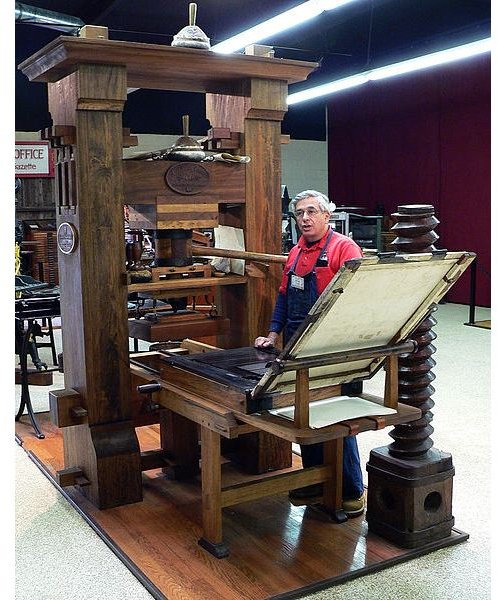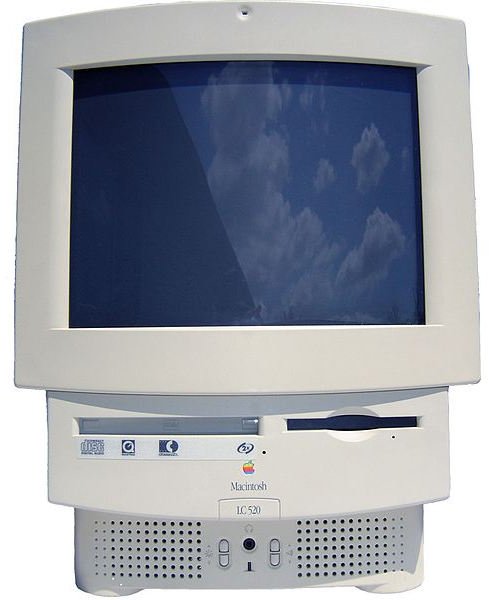Major Milestones in Printing and Publishing: From BC to DTP
Where it All Began
Although records of the written word and what might be called books have been dated as far back as the 5th century BC, the idea of printing didn’t come about until the 6th century AD. Before that, numerous media were used for writing on: clay tablets, papyrus, calfskin, and waxed wooden tablets to name but a few, but the written word wasn’t highly regarded. Although comedies, poems, lectures and dramas were enjoyed, the preferred method of communication was simply by word of mouth.
In ancient China, block printing was invented and thus started the real business of printing. Indeed we have a lot to thank China for when it comes to the history of printing as they are also credited with the invention of screen printing and movable type around 1000 AD, and of course the invention of paper in AD 105.
The spread of printing took a while to become known in the Western world. Arabs who then moved through Europe spread other inventions from the Far East, but it is thought the Arabs of the time preferred the written word to the printed word. The Quran was only permitted to be printed in 1825, which may explain the resistance.
The Guttenberg Press Has Landed

Although block printing had been widely used from around 1400, the invention of printing is widely attributed to Johannes Gutenberg and his revolutionary press. This was invented in Germany around 1440 and it took printing to a whole new level. He took charge of the whole process: movable metal type, ink, paper and the press. It was based on the existing screw presses and allowed type to be moved around with relative ease. He printed a 36 and 42 line Bible as well as an encyclopedia. It took less than 50 years to spread from Germany throughout Europe and was truly revolutionary.
Amusingly, printing on this scale met with approval initially merely as a means of avoiding copying errors. It didn’t take long though for the realization to set in that here was an opportunity for mass-market printing.
Extra, Extra - Read All About It!
Owning books was still very much a rich man’s game, so the arrival of periodicals opened the doors a little more. The first newspaper as we know it was published as early as 1666 and was called the London Gazette. For a long time this was the only officially sanctioned newspaper (although there were plenty of underground circulations).

Newspapers were a major force in terms of spreading propaganda and influencing public opinion, which is why they didn’t really take off until the 1700s in America, although many had tried and failed before this. After the Revolutionary War, there were over forty newspapers in print that were very influential in their role in this new nation. As if there was any doubt about this, Thomas Jefferson said in 1787: Were it left to me to decide whether we should have a government without newspapers, or newspapers without a government, I should not hesitate a moment to prefer the latter.
By 1814, there were well over 300 newspapers, and thanks to advances in printing and papermaking technology, the Penny Press emerged in 1830 – selling for just a cent per copy, truly meaning the printed word was not just for the rich minority.
Publishing Becomes Specialized

Up to this point, the task and finances of the business of book publishing was very much shared by the author, the printer, and often the bookseller too. However, by the 19th century publishing as a business became much more specialized and was recognized as a distinct operation – thus began editing, page layouts, production, binding and distribution elements of the industry.
From here the publishing business really took off – this was the industrial age. Steam power was a great invention of the time that pushed printing forward, as well as the iron press, and mechanical typesetting. Paper production was revolutionized and in the process meant that costs were cut also. Publishers also began to favor cloth covers over leather-bound covers cutting costs yet further. Printing became more mechanized (often at the expense of design) and literacy standards were on the rise, meaning that the printed word became ever more influential. Education was no longer just for the rich or middle classes, and working class children became influenced by books at school, their parents read the newspapers at home, and there was a real change in society.
Mass Production - Magazines and Paperbacks

The 19th century was certainly the start of mass production and is when the first magazines began to appear. The multicolor rotary press appeared in 1890, and this is when advertisers really began to take note and get a piece of the magazine action. By 1948, around half of all advertisements in magazines were printed in two colors or more.
Following WWII the trend towards giant machines for mass production became apparent, and the use of the offset printing technique coupled with photocomposition meant greatly improved working speeds. Favorable printing prices were only really possible on very large print runs though; so arrived paperbacks. By the early 1950s, the paperback revolution had really begun to take over. They were sold in large numbers on every conceivable subject and could be found in drugstores, kiosks, railway station newsstands, airports and even hotel lobbies.
Hello Desktop Publishing!
Although when we think of Steve Jobs most of us are likely to think about Macs, iPhones and iPods, it’s a little known fact that actually we have a lot to thank him for in the world of desktop publishing too and particularly in regard to fonts. After dropping out of college, Steve took a course in calligraphy and became enchanted. He liked the way it was artistic but subtle and in a way that “science can’t capture.” He learned all about Serif and Sans Serif, spacing, letter combinations and pretty much everything that makes great typography what it is.

On designing his first Mac he wanted to make sure it had a great range of fonts, and even went back to his lecturer for advice when he couldn’t find a really good Greek font. When the first Mac was released, it came with a wide choice of fonts, which was unprecedented at the time. Of course, Macs then became de rigueur for any graphic designers worth their salt from then on. Okay, so Apple didn’t invent desktop publishing, but they were very much at the forefront of this new age in the mid-1980s along with Adobe, Aldus and HP. These companies between them, with their combination of hardware and software, can truly be credited with the start of desktop publishing.
Apple provided the Macintosh computer, Adobe the Postscript page description language, Aldus the PageMaker software and HP the desktop laser printer. Although other software options arrived over the next few years (and Adobe bought out Aldus), the Mac remained a strong favorite until the arrival of Windows 95. Most designers stayed loyal to Apple, but no longer was there a restriction.
Initially there was a thought that Windows PCs weren’t as good at color accuracy, but the consensus now is that one is not better than the other is, but rather it’s down to personal choice. There are certainly software options aplenty to suit any OS and that can work across platforms, bringing publishing power directly into our homes and at our fingertips. What with affordable printers as well, it’s fair to say we could produce anything in-house if we wanted to from our own newsletter, greeting card, or even a book – my how far we’ve come!
References
- Image: P.Oxy.V1932 by Douglas Green under public domain
- One thing we owe to Steve Jobs, CNN, http://edition.cnn.com/2011/10/05/opinion/garfield-steve-jobs-fonts/index.html
- Apple Macintosh, Jay Kells/wikimedia, Public Domain
- Gutenberg Press image, vlasta2/wikimedia under CC 2.0 License Attribution Generic
- Silk Screen Printing, Printmaker, http://www.printmaker.co.uk/sprnt.html
- The Times, sherurcij/wikimedia, Public Domain
- Puck Magazine 1917, howcheng/wikimedia, Public Domain
- A brief history of newspapers, http://www.historicpages.com/nprhist.htm
- History of publishing, encyclopedia Britannica article, http://www.britannica.com/EBchecked/topic/482597/history-of-publishing
- Cloth book, goldenrowley/wikimedia under CC 3.0 license
- History of desktop publishing, http://www.designtalkboard.com/design-articles/desktoppublishing.php
